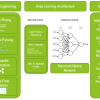Business Transformation Requires Transformational Leaders
Leadership and teaming skills are front and center in times of rapid change. Meet today’s constant disruption head on with expert guidance in leadership, business strategy, transformation, and innovation. Whether the disruption du jour is a digitally-driven upending of traditional business models, the pandemic-driven end to business as usual, or the change-driven challenge of staffing that meets your transformation plans — you’ll be prepared with cutting edge techniques and expert knowledge that enable strategic leadership.
Subscribe to Arthur D. Little's Culture & Leadership Newsletter
Insight
Nowadays, many companies contract their testing functions out to third-party IT outsourcing companies. This process, referred to as test outsourcing, is common in the industry, yet it is rarely studied in the research community. To bridge this gap, we performed an empirical study on test outsourcing with 10 interviewees and 140 survey respondents. We investigated various research questions and found that customer satisfaction expectations, tight project schedule, and domain unfamiliarity are the top three challenges testers face.
BlueMorpho is a joint research project between InSigma Hengtian Software Ltd. and Zhejiang University in Hangzhou, China, the goal of which is to empower the legacy system modernization effort and cloud migration. My BlueMorpho colleagues and I believe that about 50%-60% of overall migration costs can be saved with the use of machine intelligence and a new methodology.
Small and medium-sized enterprises (SMEs) represent 99% of the businesses in Europe and are a major source of jobs and innovation. SMEs, however, perpetually face a lack of sufficient funding. Traditional financing mechanisms such as bank loans, venture capital, and angel investments are often not available to many SMEs. Peer-to-peer financing in the form of crowdfunding is increasingly filling a funding gap for companies that are unable to obtain traditional financing or are too early in their lifecycle to attract angel investors and venture capitalists. Indeed, it was predicted the amount of funding received through crowdfunding would exceed venture capital in 2016.
This issue focuses on key topics of interest for financial services organizations, namely equity crowdfunding, legacy systems migration, robo-advisors, test outsourcing, and refining the reconciliation process.
Digital Disruption of Business Models: The Mass Mitec Story
Today, the raft of truly disruptive and empowering consumer technologies is both unprecedented and, to a large extent, unpredictable in its consequences for businesses of all sizes and for society as a whole. This Executive Update charts the digital transformation of Mass Mitec, a UK-based small-to-medium enterprise, via a disruptive digital technology in the 1990s and uses the story as an illustration of the potential and dangers of digital disruption.
Google Plays Go, Again
Here comes the automation of innovation. Organizations that move quickly and introduce these systems are going to be well placed to gain insights that will give them serious competitive advantages to their more staid competitors.
Influencing Collaboration
This Advisor identifies four actions we can take to encourage others to contribute and collaborate in a group setting.
Enabling Digital Strategy Execution via Architecture Review Board
Organizations today are constantly executing their corporate digitization strategies, requiring CIOs and IT leaders to engage with business stakeholders to deliver specific outcomes. Such engagement must be governed by the organization’s processes, operating model, and technology governance to ensure robust, scalable architectures and roadmaps.
















